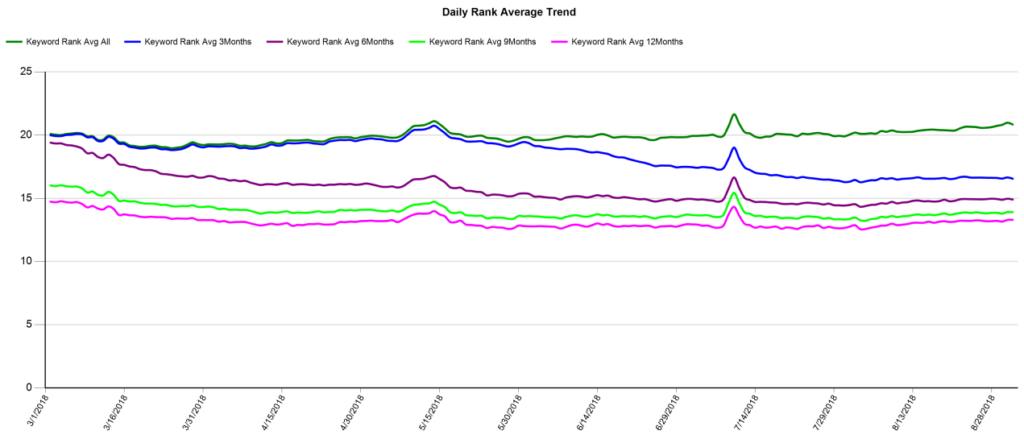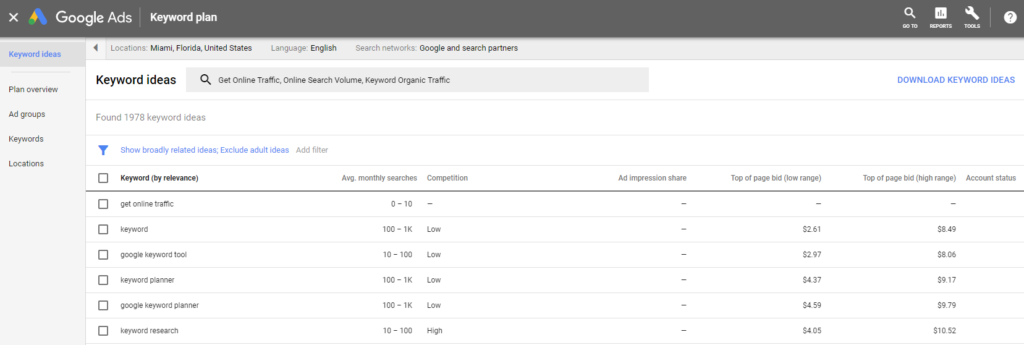This month with our general trends we had a slight decline. In looking over our data, there could be a handful of reasons: customer churn, keyword changes, and algorithm changes. Here’s the SEO Update for September:

From an algorithm perspective, Google released an update called ‘Medic’, seemingly titled because most sites impacted were in the medical-related. Keyword intent seems to be the initial speculation and correlation points for the update; specifically matching searcher actions and potential goals when searching. This can alter what websites Google now considers relevant for those search results. We have seen a few cases that seem to correlate with the update but nothing massive.

Please keep in mind that algorithm updates occur frequently and can be rolled back or altered, meaning an impacted website or ranking today will not necessarily stay that way forever. This is especially true for content and intent-type updates where needs can change or have several interpretations.
What does this mean?
If you feel the “Medic Update” impacted your website, take a closer look at who now ranks on the first page. If they are closely related to you then it most likely a difference in content or quality. Work on updating or improving the content on your affected pages. If you notice those now ranking are not similar to your site, you may want to consider changing your keyword focus. As always, if you are unsure or want a second opinion I would love to help. Feel free to reach me on twitter @BigCSEO.
Unreliable Search Volume
Search volume, and subsequently traffic as a performance indicator for organic search, seems like a pretty solid metric until you look a bit deeper at where this data comes from and how it’s potentially used. While this isn’t a new idea, it keeps coming up. To put it bluntly, keyword search volume and traffic are not good metrics for determining success in organic searches for numerous reasons. You have to start with understanding where this data comes from.
The closest source for true search volume is Google’s Keyword Planner which is for Google Ads (Pay Per Click) campaigns. And while this initially may not sound like a bad idea when talking about searches, because you are bidding and paying for a certain amount of appearances or clicks, you are guaranteed traffic, unless you’ve heavily defined the campaign parameters in the settings. This leads to what we see in the Keyword Planner today. Normal things like keyword bundling, where combining similar keywords and volumes, provides traffic estimate ranges. The exact search volume could be outdated or missing and limits top-end keywords being the norm for the tool. Since 15% of all queries on Google are new, only a small amount ever make it to the Keyword Planner because of trends, volume, or bundling.
With the foundation of search volume crumbling, some may want to propose or even derive success from the byproduct of search volume, which is traffic. But the validity of this metric quickly fades once you tack on a few factors that impact potential volume. It starts with the click-through rates that vary for every search and search result type (rich snippets, maps, videos, etc.) Add on changing rank positions, algorithms, and usage behavior that skews the data even further. Finally, we have to keep in mind that real people search living in the real world. This means everyday things like traffic, weather, native advertisements, events, politics, etc., have a real impact on potential search volume. Added together, it makes predicting, planning, and evaluating traffic next to impossible.
But don’t lose hope! I encourage anyone looking at these metrics to take them with a grain of salt. Don’t make them your only factors when determining good keywords. Instead, use them as a soft metric or tie breaker when comparing keywords. Your focus should always be around intent and user experience. Especially for your keywords, which are most likely to drive work and campaign evaluations (rankings, conversion, etc.) in your SEO.
What does this mean?
When you are looking at keywords, search volume, and traffic, keep some of this information in mind. It will help you make better decisions for your website and business. Always remember data validity and its purpose when looking for key performance indicators. What may seem like a great data point or metric may not be as accurate when scrutinized.
Key Articles
Search Console Index Coverage Report Updated: Google recently updated their index coverage report to be more robust and accurate. (Source)
Google’s URL Removal Tool Functionality: It was confirmed that when you submit a URL to be removed it does not actually remove it from the index, instead, it simply hides it. (Source)
HTTPS Changes Should not be Rushed: Google advises not rushing security updates to your website, simply apply 301 redirects and wait. (Source)
Google’s Medic Update: Google released another core algorithm update, while this one initially looked like it targeted medical sites. Eventually, it was shown to impact almost everyone in some way or another. (Source)
Fresh Content Does not Impact Rankings Unless Necessary: It was confirmed via Twitter that fresh content is not a core ranking factor unless the query deserves freshness. (Source)


